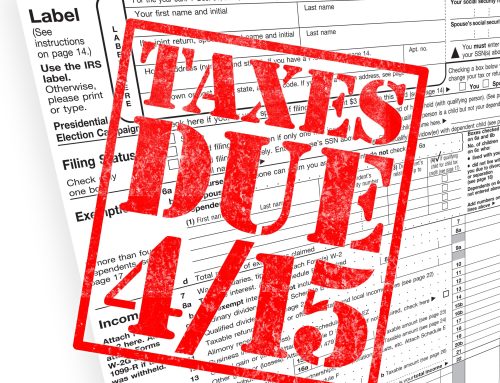Article Highlights:
- Daycare Providers
- Simplified Food Deduction
- Special Rules for Business Use of the Provider’s Home
- Home Sale Consequences
- Other Expenses
- Other Daycare Provider Issues
- Daycare User Credit
- Employer Dependent Care Benefits
- Other Credit Criteria
When discussing daycare for children so their parents can work, there are two primary areas of discussion: one from the viewpoint of the individual providing the daycare services and another from the parents using a daycare provider’s services. Tax law provides special benefits for both.
DAYCARE PROVIDERS
Daycare providers are generally self-employed individuals who provide care in their home, and like other self-employed individuals conducting a business, they are allowed to deduct business expenses, including the following:
- Business Use of a Vehicle – Examples of business-related use of a personal vehicle by a daycare provider include taking the kids to the park, on field trips, or the movies. Also eligible are miles used to purchase supplies and other business-related travel. What’s deductible is the standard mileage rate of 58 cents per business mile (2019) or the prorated business portion of the actual operating expenses for the vehicle. In either case, a contemporaneously prepared log detailing the business trips should be maintained.
- Food – Daycare providers can deduct the cost of meals provided to the children (not including meals for their own children). The simplest method, which does not require documenting food purchases, is to use the simplified meal deduction. This does not preclude a care provider from using the actual expenses if the actual cost is higher and the provider is willing to document the expenses without including food purchased for his or her own family’s use. If the provider receives some form of reimbursement or subsidy, then the provider may deduct only the part of the simplified rate that exceeds the reimbursed amount.
- Business Use of the Home – Self-employed individuals may take a business deduction for the business use of a portion of their home if that portion is used exclusively for business. Daycare facilities are not subject to the exclusive use requirement that applies to other home offices. However, that special rule only applies to providers who:
- Are licensed, certified, registered or approved as a daycare care provider under state law;
- Have a pending application for licensing, certification, registration, or approval under state law as a daycare provider that has not been denied; or
- Is exempt from licensing, certification, registration, or approval under state law.
Any daycare provider not meeting one of these three requirements is still subject to the exclusive use rules, which will generally preclude them from the deduction unless they use some portion of the home exclusively for daycare purposes, such as a bedroom or a storage area. The daycare facility exception does not apply if the services performed are primarily educational or instructional in nature (e.g., musical instruction). However, the exception does apply if the services are primarily custodial and if the educational, development, or enrichment activities are only incidental to the custodial services. The services must be provided for individuals age 65 or older, children, or individuals who are physically or mentally incapable of caring for themselves.
When calculating the percentage of business use of the home, both the space used to operate the daycare business and the amount of time that the space is used to provide day care, including preparation and cleaning time, are factors.
Once the percentage is determined, all of the home expenses, including interest, taxes, home insurance, maintenance, utilities, and depreciation, are summed up and multiplied by the percentage to determine the deduction for the business use of the home. If the home is rented, the rent expense replaces the interest, taxes, and depreciation. After determining the deduction, it is further limited to the gross income from the daycare, and if limited by the gross income, there is a specific order in which the home expenses can be used (not discussed in this article).
Claiming the business use of the home deduction will also impact any future sale of the home. For taxpayers who own and use their home for two years out of the five years prior to the sale, they can generally exclude up to $250,000 ($500,000 if married filing jointly) of any resulting gain. However, any depreciation claimed or that could have been claimed after May 15, 1997, cannot be excluded and, as a result, will be taxable to the extent of any gain from the sale.
- Other Expenses – Other expenses include just about any expense that has to do with operating the daycare facility, including, for example:
- Advertising
- Business banking account fees
- Daycare licensing
- Daycare organization membership expenses
- Seminars and education related to operating a daycare center
- Business insurance
- Games and toys
- Supplies, diapers, wipes, and cleaning supplies
- Phone service
- Prorated Internet service
- Field trip expenses
- Payroll for employees
Additional important tax issues apply to daycare providers:
Self-Employment Tax – Like all self-employed taxpayers, daycare providers must pay self-employment tax, which is made up of the Social Security tax of 12.4% on the first $132,900 (2019) of profit from the business and a 2.9% Medicare tax on all of the profits. In addition, there is an additional 0.9% Medicare tax on the extent to which the profits exceed $200,000 for single taxpayers, $250,000 for married taxpayers filing jointly, and $125,000 for married taxpayers filing separately. In addition, half of the self-employment tax can be deducted from gross income.
Retirement Plan Contributions – Profits from a daycare business qualify for IRA contributions and self-employed retirement plans, allowing daycare providers to put away substantial amounts for their future retirement.
Medical Insurance Above-the-Line Deduction – While most taxpayers must itemize their deductions in order to deduct the cost of their medical insurance, self-employed taxpayers – including daycare providers, to the extent of the profits from their business – can deduct the premiums from their adjusted gross income and avoid the 10% medical expense haircut when itemizing deductions.
Employer Identification Number – Most daycare clients can claim a tax credit for the cost of daycare. However, to do so, they must include either the daycare provider’s Social Security number (SSN) or an employer identification number (EIN) on their tax returns. It is a best practice in this age of ID theft not to use the SSN and instead obtain an EIN.
DAYCARE USER
Individuals who use the services of daycare providers may qualify for a tax credit if the expense is an “employment-related” expense, i.e., it must enable a taxpayer or spouse, if married, to work, and it must be for the care of a child, stepchild, foster child, brother, sister, or stepsibling (or a descendant of any of these) who is under 13, lives in the taxpayer’s home for more than half the year, and does not provide more than half of his or her own support for the year. Married couples must file jointly, and both spouses must work (or one spouse must be a full-time student or disabled) to claim the credit.
The qualifying expenses are limited to the income from working and, in the case of a married couple, are limited to the lower of the taxpayer’s or the spouse’s income from working. However, under certain conditions, when one spouse has no actual income from working and that spouse is a full-time student or disabled, that spouse is considered to have a monthly income of $250 (if the couple has one qualifying child) or $500 (for two or more qualifying children). This means the income limitation is essentially removed for a spouse who is a student or disabled all year.
The qualifying expenses can’t exceed $3,000 per year for those who have only one qualifying child, while the limit increases to $6,000 per year for those with two or more qualifying persons.
If there are two children, the care expenses need not be divided equally. For example, if the taxpayer paid $2,500 in qualified expenses for the care of one child and $3,500 for the care of another child, the $6,000 can be used to determine the credit.The credit is computed as a percentage of qualifying expenses – in most cases, 20%.
The credit reduces a taxpayer’s tax bill dollar for dollar. However, the credit can only offset income tax and alternative minimum tax liability, and any excess is not refundable. The credit cannot be used to reduce self-employment tax, if a taxpayer is self-employed, or the taxes imposed by the Affordable Care Act.
Employer Dependent Care Benefits – Some employers provide dependent care assistance programs to help their employees with the cost of daycare. Payments under these plans used by employees to pay dependent care expenses are excludable from employees’ income, up to the lower of:
- The employee’s earned income (for married employees, this is the earned income of the lower-paid spouse) or
- $5,000 ($2,500 for married filing separate).
Because reimbursement up to these limits is excludable from income, the benefits the employee receives are treated as reimbursement for daycare expenses that reduce the expense limits of $3,000 for one child and $6,000 for two or more children. Reimbursement in excess of these limits is taxable to the employee and does not reduce qualified expenses for the credit.
Other Credit Criteria:
- Age of the Child – If the qualifying child turned 13 during the year, count only the care expenses paid for the child for the part of the year when he or she was under age 13.
- Day Camps – Many working parents must arrange for care for their children under 13 years of age (or any age if disabled) during school vacation periods. A popular solution — with a tax benefit — is a day camp program. The cost of day camp can count as an expense toward the child and dependent care credit. But be careful: expenses for overnight camps do not qualify. Also, not eligible are expenses paid for summer school or tutoring programs.
- Both Parents Working in an Unincorporated Business – When both spouses of a married couple are jointly involved in an unincorporated business, it is fairly common, but incorrect, for all of that business’s income to be reported as just one spouse’s income. As a result, they lose the benefits of the childcare credit, which requires both spouses to have income from working.
- School Expenses – Only school expenses for a child below the kindergarten level are considered qualifying expenses for this credit.
- In-Home Care Providers – If the daycare is provided in a taxpayer’s home, the daycare provider is considered a household employee.
This has been an overview of the various tax issues related to daycare from the perspectives of both the provider and the recipient of daycare services. However, as in everything taxes, many more rules and issues exist than could be included in this article. So, for information about how states deal with the issue and questions about how the daycare will impact your taxes, please give this office a call.







